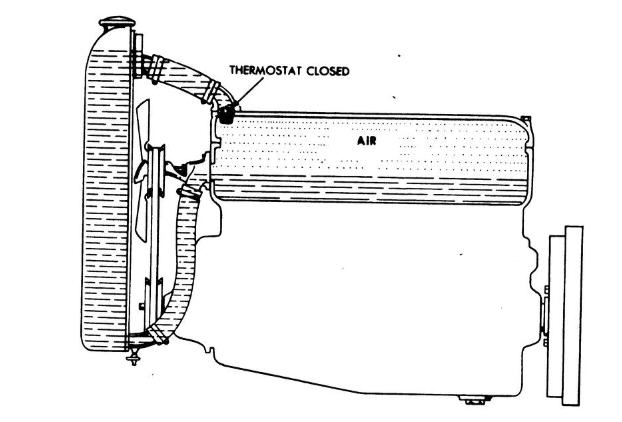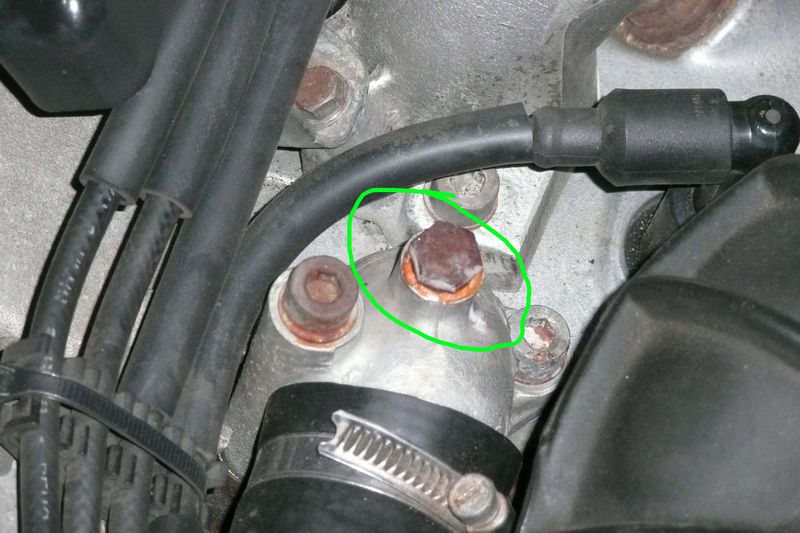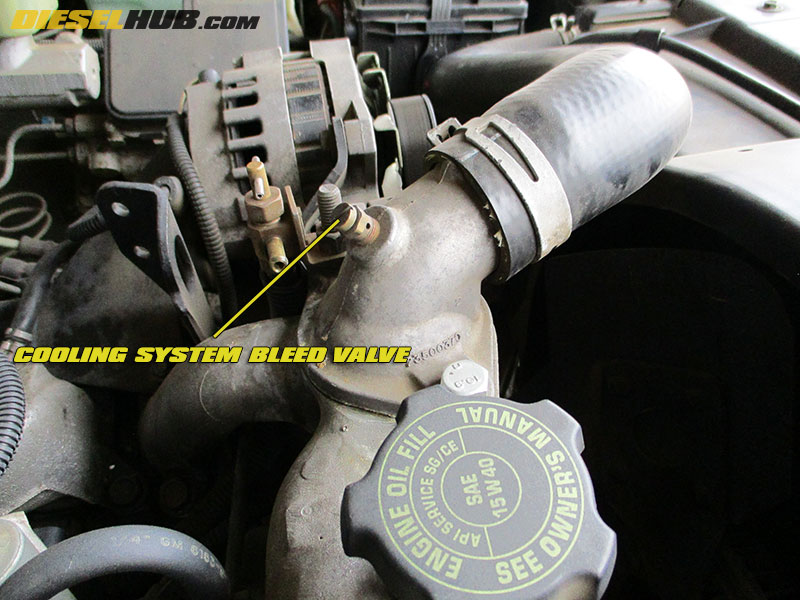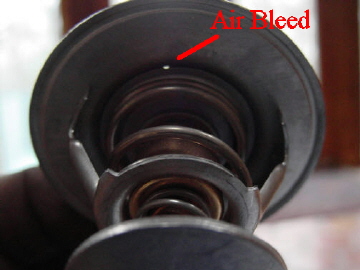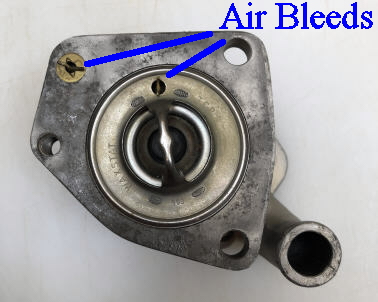When
the cooling system is initially filled, coolant displaces air. With the
old thermosiphon systems, air was simply vented out the filler neck. But
when a thermostat is introduced, air can be trapped in the block and head.
With
air trapped behind the closed thermostat, a dry engine will overheat before
the thermostat becomes hot enough to open. And even if the thermostat opens,
the coolant level will be insufficient. Something needs to be done to allow
coolant to rise at least to the level of the thermostat before that first
start. The very simplest solution is a bleed port which can be opened while
filling the system. The port may be controlled with a valve or simply with
a screw plug.
For many
applications, this function is handled by a air bleed port drilled directly
through the thermostat itself. Sometimes it's just a small notch cut in
the edge of the poppet. The port allows air to bleed past the thermostat
and be released through the radiator filler neck. A bleed hole is a permanent
leak that can bleed a quart of coolant a minute in normal operation, so
it really has to be kept small. A vent can be added to any non-vented thermostat,
just keep the size of the hole to around 1/16".
The most
common venting provision for British applications is a jiggle valve in
the thermostat cap or poppet. This a simple brass or plastic stopper which
is loosely anchored in a hole. While the engine is filled with air, the
jiggle valve won't seal. But when the system is full of coolant and the
engine is running, the stopper in pressed into the hole by the force of
coolant flow. This is an automatic solution that's relatively leak free.
When
retrofitting a generic thermostat to an old application, care must be taken
that the thermostat has a jiggle valve that is set up correctly: if the
thermostat is designed to operate on the cool side of the engine (more
about this in the bypass discussion), then the valve will be in the reversed
position. Installing such a thermostat in a warm side application will
result in a large, permanent leak.
A variation of this theme is the ball valve. This is a stainless ball caged in a seat. As with the jiggle valve, it will be pressed closed by the force of flowing coolant. Because the ball and seat are precisely matched, the ball valve may be somewhat less likely to leak than the jiggle valve. My last
example is a very silly design. This is the thermostat housing from a Series
II E-Type. This housing has a separate jiggle valve, which vents air into
a port, which connects to a hose, which connects to the radiator. Thus
very expensively doing what a vented thermostat could do just as easily.
When a vented Waxstat is installed, then the bleed is redundant. I don't
think anyone can be proud of this one.
A few
final comments. When a thermostat with a vent provision is installed, the
vent port must be oriented to the highest point. Otherwise, air won't rise
above the wax capsule or bellows and the thermostat may open late. It's
important to fill the radiator to the top, then give the air plenty of
time to bleed out through that tiny hole. (If the system has other
bleed points, and XJS folks know all about this, make sure they are open
until all the air is out.) The thermostat bleed port is very small, so
it takes time for all the air to rise out. Top it off, let it sit, repeat
until it won't take any more. Patience is needed to prevent air pockets.
Copyright©2019 CoolCat Express Corp. |
